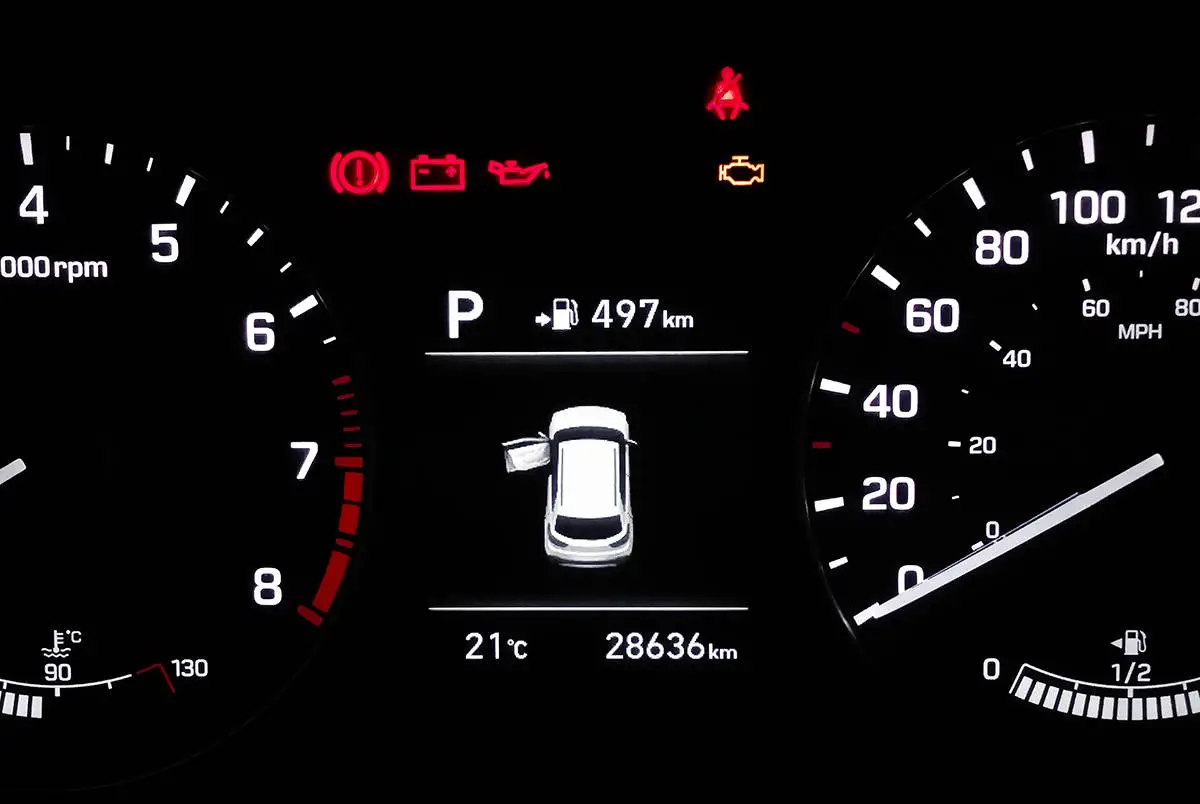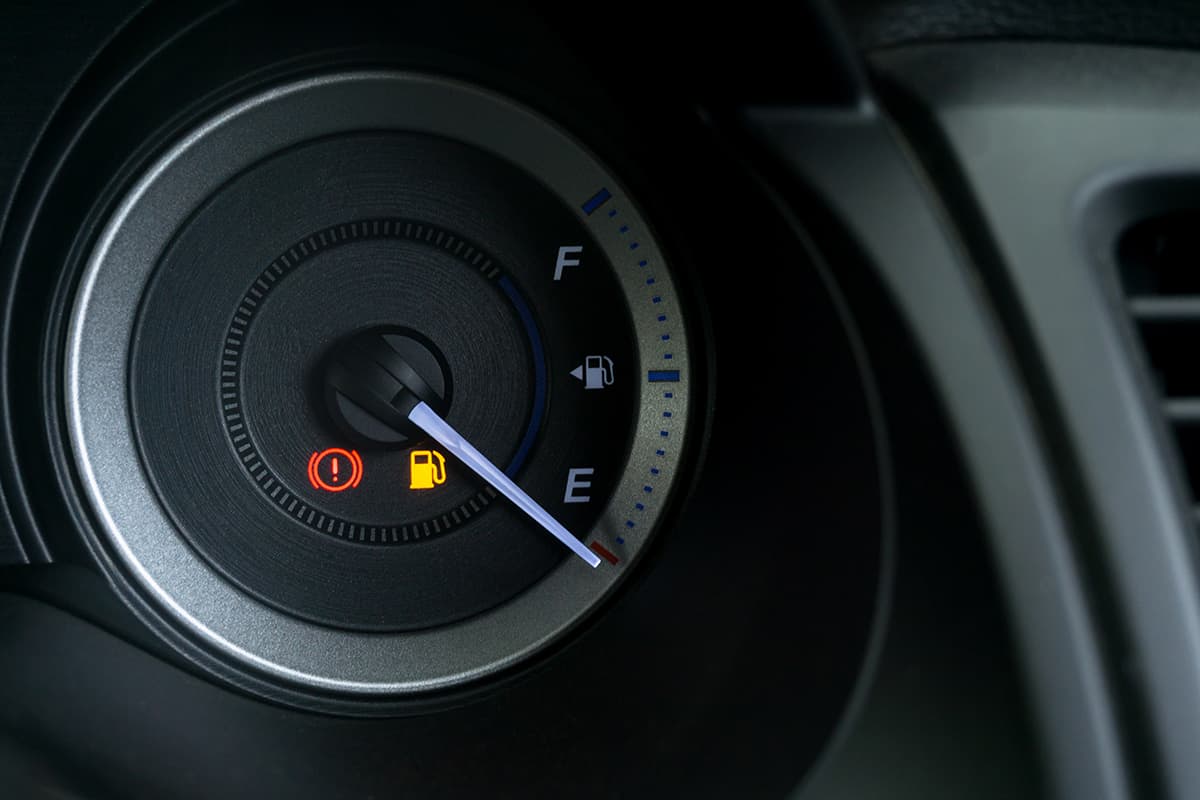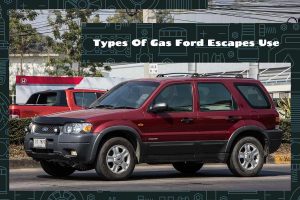As car owners, we are all too familiar with the dreaded feeling of running low on gas. It’s a situation that we try to avoid at all costs, but sometimes life gets in the way and we forget to fill up the tank. That’s why knowing how many miles a full tank of gas can last is crucial.
Here’s a breakdown of the number of miles a car can drive on a full tank of gas based on type:
- Small: 300-480 miles
- Mid-sized: 350-480 miles
- Full-sized: 200-400 miles
- SUVs and Trucks: 345-720 miles
In this guide, we’re going to go over the estimated mileage that a car can drive on a full tank of gas based on make and model. I’ll also describe the various factors that can affect your car’s mileage on a full tank.
How Many Miles Does A Full Tank Of Gas Last?
As stated earlier, the average driving distance per tank refill varies dramatically. If you’re looking for averages, here you go:
| Size Category | Miles | Kilometers |
| Small | 300 to 480 | 483 to 772 |
| Mid-sized | 350 to 480 | 563 to 772 |
| Full-sized | 200 to 400 | 322 to 644 |
| SUVs and Trucks | 345 to 720 | 555 to 1,159 |
However, if you’re looking for more precise figures, I invite you to continue reading.
Average Travel Distance per Tank by Car Type
One of the simplest ways to determine how far your car can travel on a full tank of gas is looking at its mileage ratings. Of course, these ratings are only estimates, but they should give you a general idea of how much distance you can cover per refill.
In the following sections, I’ll note the estimated travel distance per full refill based on a car’s type and model.
1. Small cars
A small car is a type of vehicle that is smaller in size than the average car, and typically has a lower price point and better fuel economy. Small cars can vary in size, ranging from microcars and city cars to subcompacts and compact cars.
These vehicles are often more efficient, easier to maneuver, and can be more affordable than larger cars.
| Car | Fuel Tank Capacity (gallons) | Mileage (city, highway, est. combined) | Travel Distance on a Full Tank (miles) |
| Chevrolet Cruze | 13.7 | 22/35/27 | 301.4/479.5/369.9 |
| Fiat 500 | 10.5 | 28/33/30 | 294/346.5/315 |
| Ford Focus | 12.4 | 30/42/35 | 372/520.8/434 |
| Honda Civic | 12.4 | 30/37/33 | 372/458.8/409.2 |
| Honda Fit | 10.6 | 29/36/32 | 307.4/381.6/339.2 |
| Hyundai Accent | 11.4 | 33/41/36 | 376.2/467.4/410.4 |
| Hyundai Elantra | 12.4 | 33/43/37 | 409.2/533.2/458.8 |
| Kia Forte | 14 | 31/41/35 | 434/574/490 |
| Kia Rio | 11.9 | 33/41/36 | 392.7/487.9/428.4 |
| Mazda Mazda3 | 13.2 | 26/36/30 | 343.2/475.2/396 |
| Mini Cooper | 11.6 | 27/37/31 | 313.2/429.2/359.6 |
| Mitsubishi Mirage | 9.2 | 36/43/39 | 331.2/395.6/358.8 |
| Nissan Sentra | 12.4 | 29/39/33 | 359.6/483.6/409.2 |
| Nissan Versa | 10.8 | 32/40/35 | 345.6/432/378 |
| Subaru Impreza | 13.2 | 24/31/26 | 316.8/409.2/343.2 |
| Toyota Corolla | 13.2 | 32/41/35 | 422.4/541.2/462 |
| Toyota Yaris | 11.1 | 30/39/34 | 333/432.9/377.4 |
| Volkswagen Golf | 13.2 | 24/34/28 | 316.8/448.8/369.6 |
Source: Edmunds.com
2. Mid-sized cars
A mid-size car is a type of automobile that falls between a compact car and a full-size car in terms of size and features. According to the Environmental Protection Agency (EPA), a mid-size car has between 110 to 120 cubic feet of passenger and cargo volume, and cannot be longer than 196.8 inches.
Mid-size cars are popular among consumers because they offer a good balance of comfort, fuel efficiency, and performance. They are often used for commuting, hauling families, and long-distance travel.
| Car | Fuel Tank Capacity (gallons) | Mileage (city, highway, est. combined) | Travel Distance on a Full Tank (miles) |
| Acura TLX | 15.9 | 22/31/25 | 349.8/492.9/397.5 |
| Audi A4 | 15.3 | 25/34/28 | 382.5/520.2/428.4 |
| BMW 3 Series | 15.6 | 26/36/30 | 405.6/561.6/468 |
| Buick Regal | 16.3 | 22/32/26 | 358.6/521.6/423.8 |
| Chevrolet Malibu | 15.8 | 27/35/30 | 426.6/553/474 |
| Chrysler 300 | 18.5 | 19/30/23 | 351.5/555/425.5 |
| Dodge Charger | 18.5 | 18/27/21 | 333/499.5/388.5 |
| Ford Fusion | 16.5 | 23/34/27 | 379.5/561/445.5 |
| Honda Accord | 14.8 | 29/37/32 | 429.2/547.6/473.6 |
| Hyundai Sonata | 14.8 | 28/38/32 | 414.4/562.4/473.6 |
| Infiniti Q50 | 20 | 20/29/23 | 400/580/460 |
| Kia Optima | 18.5 | 25/35/29 | 462.5/647.5/536.5 |
| Lexus ES | 15.9 | 22/32/26 | 349.8/508.8/413.4 |
| Mazda6 | 16.4 | 26/35/29 | 426.4/574/475.6 |
| Mercedes-Benz C-Class | 17.4 | 25/35/29 | 435/609/504.6 |
| Nissan Altima | 16.2 | 27/37/31 | 437.4/599.4/502.2 |
| Subaru Legacy | 18.5 | 27/35/30 | 499.5/647.5/555 |
| Toyota Camry | 15.8 | 28/39/32 | 442.4/616.2/505.6 |
| Volkswagen Passat | 18.5 | 24/36/28 | 444/666/518 |
| Volvo S60 | 15.9 | 26/35/30 | 413.4/556.5/477 |
Source: Edmunds.com
3. Full-sized cars
A full-sized car is a type of vehicle that falls into the largest car segment, offering ample space for passengers and cargo. These cars typically have an interior volume of more than 120 cubic feet for sedans or 160 cubic feet for station wagons.
Full-sized cars are generally known for their comfortable interiors, advanced technology features, and overall luxury. However, it’s important to note that full-sized cars are not SUVs, trucks, or vans, but rather larger cars with increased luggage space compared to standard or intermediate models.
| Car | Fuel Tank Capacity (gallons) | Mileage (city, highway, est. combined) | Travel Distance on a Full Tank (miles) |
| Audi A6 | 19.3 | 24/31/27 | 463.2/598.3/521.1 |
| BMW 5 Series | 18 | 25/33/28 | 450/594/504 |
| Buick LaCrosse | 15.8 | 25/35/29 | 395/553/458.2 |
| Cadillac XTS | 19 | 19/28/22 | 361/532/418 |
| Chevrolet Impala | 18.5 | 18/28/22 | 333/518/407 |
| Chrysler 300 | 18.5 | 19/30/23 | 351.5/555/425.5 |
| Dodge Charger | 18.5 | 18/27/21 | 333/499.5/388.5 |
| Ford Taurus | 19 | 18/26/21 | 342/494/399 |
| Honda Accord | 14.8 | 29/37/32 | 429.2/547.6/473.6 |
| Hyundai Azera | 18.5 | 20/29/23 | 370/536.5/425.5 |
| Jaguar XF | 19.5 | 25/33/28 | 487.5/643.5/546 |
| Kia Cadenza | 18.5 | 20/28/23 | 370/518/425.5 |
| Mercedes-Benz E-Class | 17.4 | 23/31/26 | 400.2/539.4/452.4 |
| Nissan Maxima | 18 | 20/30/24 | 360/540/432 |
| Toyota Avalon | 14.5 | 22/32/26 | 319/464/377 |
| Volkswagen Passat | 18.5 | 24/36/28 | 444/666/518 |
| Volvo S90 | 15.9 | 23/32/26 | 365.7/508.8/413.4 |
Source: Edmunds.com
4. SUVs and trucks
An SUV, or sports utility vehicle, is a type of vehicle that is typically taller and boxier a truck is a type of vehicle that typically has an open cargo area, long beds, and spacious interiors. Trucks can range in size from light duty to heavy duty, than a sedan and offers an elevated seating position with more ground clearance than a car.
| Car | Fuel Tank Capacity (gallons) | Mileage (city, highway, est. combined) | Travel Distance on a Full Tank (miles) |
| Chevrolet Silverado 1500 | 24 | 19/22/20 | 456/528/480 |
| Chevrolet Suburban | 31 | 15/20/17 | 465/620/527 |
| Chevrolet Tahoe | 26 | 15/22/18 | 390/572/468 |
| Dodge Durango | 24.6 | 14/22/17 | 344.4/541.2/418.2 |
| Ford Expedition | 23.3 | 17/23/19 | 396.1/535.9/442.7 |
| Ford Explorer | 18.6 | 18/24/20 | 334.8/446.4/372 |
| Ford F-150 | 26 | 19/22/20 | 494/572/520 |
| GMC Sierra 1500 | 28 | 16/22/18 | 448/616/504 |
| GMC Yukon | 26 | 15/22/18 | 390/572/468 |
| Jeep Gladiator | 22 | 16/23/19 | 352/506/418 |
| Jeep Grand Cherokee | 24.6 | 19/26/21 | 467.4/639.6/516.6 |
| Jeep Wrangler | 17 | 17/25/20 | 289/425/340 |
| Nissan Armada | 26 | 14/19/16 | 364/494/416 |
| Nissan Frontier | 21 | 19/24/21 | 399/504/441 |
| Nissan Pathfinder | 19 | 20/27/23 | 380/513/437 |
| Ram 1500 | 26 | 20/25/22 | 520/650/572 |
| Toyota 4Runner | 23 | 16/19/17 | 368/437/391 |
| Toyota Sequoia | 26.4 | 13/17/14 | 343.2/448.8/369.6 |
| Toyota Tacoma | 21.1 | 18/22/20 | 379.8/464.2/422 |
| Toyota Tundra | 22.5 | 18/24/20 | 405/540/450 |
Source: Edmunds.com
What Factors Affect Total Mileage per Refill?

While the estimated mileage per gallon provided by manufacturers can give you an idea of how far you can go on a full tank of gas, it’s important to note that the actual mileage you get can vary based on several factors.
Understanding what affects your car’s total mileage per refill can help you make more informed decisions about how and when to refill your gas tank. In this section, we’ll explore some of the factors that can impact your car’s total mileage per refill and how you can optimize your driving habits to maximize fuel efficiency.
1. Driving behavior
Aggressive driving, such as speeding, rapid acceleration, and braking, can lower gas mileage by 15-30% on highways and 10-40% in stop-and-go traffic. Excessive idling also decreases MPG.
2. Physical characteristics
Fuel injector problems and oil type can also affect fuel economy. A leak or other injector problem may reduce the amount of fuel reaching the engine, forcing your car to run less efficiently.
3. Vehicle type
The type of vehicle can also impact mileage. Diesel engine RVs are more fuel-efficient than gas RVs, for example.
4. Driving conditions
Whether you’re driving in the city or on a highway can impact mileage. Fuel consumption can vary 5-10 MPG depending on whether you’re using a highway or regular city stop-and-go to commute.
5. Condition of the car
The age of the vehicle, where you live, the length of your commute, and your lifestyle habits can also play a role in total mileage per refill. For example, drivers in urban environments may have different average mileage than those in rural areas.
Proper maintenance of the vehicle, such as keeping the tires inflated to the proper level, replacing air filters, and getting regular oil changes, can also help improve fuel economy and increase total mileage per refill.





